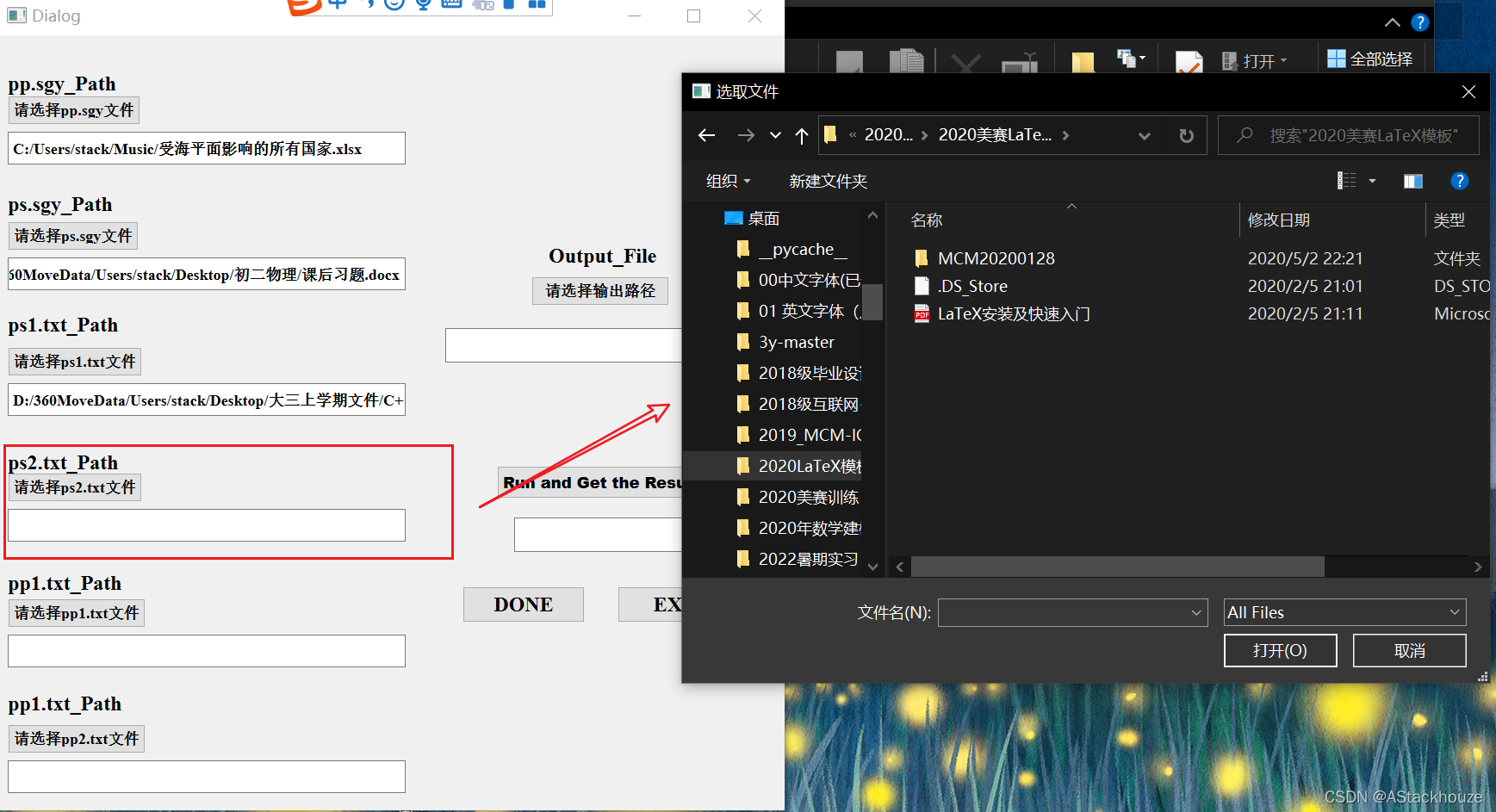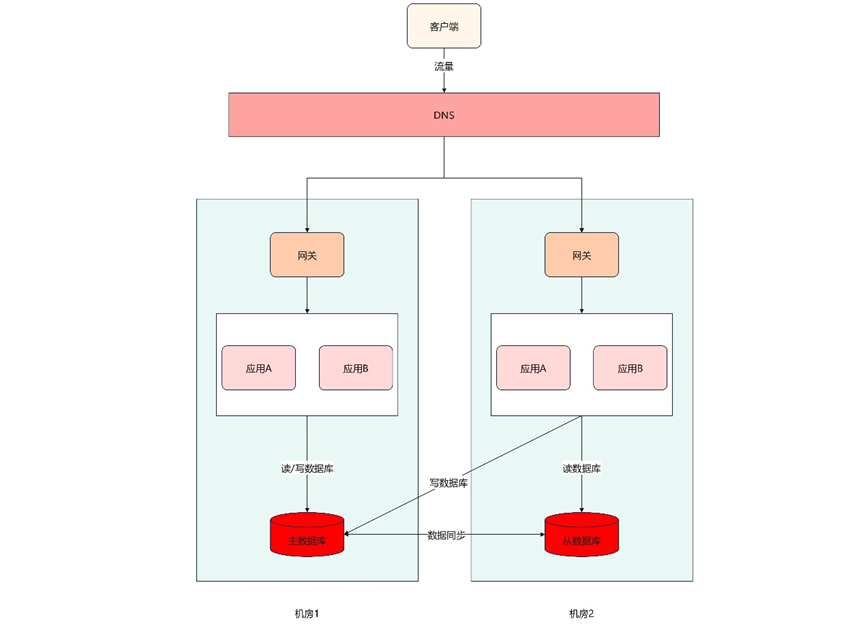用PYQT5设计Python运行界面:选择文件夹的文件并自动获取文件地址
用PYQT5设计Python程序的运行界面一、pandas是什么?二、使用步骤1.引入库2.读入数据总结如图,设计了一个界面,用于选择需要执行的文件和数据集,点击运行并执行,得到结果。提示:以下是本篇文章正文内容,下面案例可供参考一、pandas是什么?示例:pandas 是基于NumPy 的一种工具,该工具是为了解决数据分析任务而创建的。二、使用步骤1.引入库代码如下(示例):import nu
·
用PYQT5设计Python程序的运行界面
如图,设计了一个界面,用于选择需要执行的文件和数据集,点击运行并执行,得到结果。

一、在PyQT5中自定义一个窗口
在PYQT中使用其包含的工具设计一个界面,简单即可,注意给每个框和按钮命名,方便后续操作。

二、界面功能实现
此时的界面没有任何功能,需要写代码来实现
1. 将ui文件转化为py文件
2. 对py文件中的内容进行修改

3. 对窗口进行功能实现
从上至下的函数依次为每个路径选择按钮,如:

# -*- coding: utf-8 -*-
"""
Created on Thu Aug 5 20:26:42 2021
@author: stack
"""
import sys
import os
from PyQt5.QtWidgets import *
from PyQt5 import QtWidgets
from APP_GEN import Ui_MainWindow
import APP_GEN
paths=[]
def input_pp_sgy(self):
fileName,fileType=QtWidgets.QFileDialog.getOpenFileName(None,"选取文件",os.getcwd(),"All Files(*);;Text Files(*.txt)")
paths.append(fileName)
ui.show_pp_sgy.setText(fileName)
def input_ps_sgy(self):
fileName,fileType=QtWidgets.QFileDialog.getOpenFileName(None,"选取文件",os.getcwd(),"All Files(*);;Text Files(*.txt)")
paths.append(fileName)
ui.show_ps_sgy.setText(fileName)
# ps_path=fileName
def input_ps1_txt(self):
fileName,fileType=QtWidgets.QFileDialog.getOpenFileName(None,"选取文件",os.getcwd(),"All Files(*);;Text Files(*.txt)")
paths.append(fileName)
ui.show_ps1_txt.setText(fileName)
def input_ps2_txt(self):
fileName,fileType=QtWidgets.QFileDialog.getOpenFileName(None,"选取文件",os.getcwd(),"All Files(*);;Text Files(*.txt)")
paths.append(fileName)
ui.show_ps2_txt.setText(fileName)
def input_pp1_txt(self):
fileName,fileType=QtWidgets.QFileDialog.getOpenFileName(None,"选取文件",os.getcwd(),"All Files(*);;Text Files(*.txt)")
paths.append(fileName)
ui.show_pp1_txt.setText(fileName)
def input_pp2_txt(self):
fileName,fileType=QtWidgets.QFileDialog.getOpenFileName(None,"选取文件",os.getcwd(),"All Files(*);;Text Files(*.txt)")
paths.append(fileName)
ui.show_pp2_txt.setText(fileName)
def Output_File(self):
directory=QtWidgets.QFileDialog.getExistingDirectory(None, "请选择文件夹路径","D:/")
paths.append(directory)
ui.show_outputfile.setText(directory)
def DONE(self):
if not os.path.isfile("paths.txt"):
f=open("paths.txt", mode="w")
else:
f=open("paths.txt",mode="w")
str = '\n'
f.write(str.join(paths))
f.close
def run_py(self):
ui.lineEdit.setText("RUNNING")
#print(paths)
os.system("python final_Converse_APP.py")
if __name__ == '__main__':
app = QApplication(sys.argv)
MainWindow = QMainWindow()
ui = APP_GEN.Ui_MainWindow()
ui.setupUi(MainWindow)
MainWindow.show()
ui.input_pp_sgy.clicked.connect(input_pp_sgy)
ui.input_ps_sgy.clicked.connect(input_ps_sgy)
ui.input_ps1_txt.clicked.connect(input_ps1_txt)
ui.input_ps2_txt.clicked.connect(input_ps2_txt)
ui.input_pp1_txt.clicked.connect(input_pp1_txt)
ui.input_pp2_txt.clicked.connect(input_pp2_txt)
ui.Output_File.clicked.connect(Output_File)
ui.DONE.clicked.connect(DONE)
ui.pushButton.clicked.connect(run_py)
sys.exit(app.exec_())
部分代码解释:
- 按钮与函数执行建立连接点击按钮即执行对应的函数
ui.input_pp_sgy.clicked.connect(input_pp_sgy)
ui.input_ps_sgy.clicked.connect(input_ps_sgy)
ui.input_ps1_txt.clicked.connect(input_ps1_txt)
ui.input_ps2_txt.clicked.connect(input_ps2_txt)
ui.input_pp1_txt.clicked.connect(input_pp1_txt)
ui.input_pp2_txt.clicked.connect(input_pp2_txt)
ui.Output_File.clicked.connect(Output_File)
ui.DONE.clicked.connect(DONE)
ui.pushButton.clicked.connect(run_py)
- 将文件路径保存保存至文件夹
先定义一个列表path=[ ],每个函数中有一条语句:paths.append(fileName),本程序中的DONE函数即是将path的内容存进一个文件夹,点击“DONE”按钮,自动生成path.txt文件。
def DONE(self):
if not os.path.isfile("paths.txt"):
f=open("paths.txt", mode="w")
else:
f=open("paths.txt",mode="w")
str = '\n'
f.write(str.join(paths))
f.close


至此,功能完整实现,若需要对文件路径进行操作,可转化为对paths文件进行操作。在本程序中,对路径的操作如下:
if __name__ == '__main__':
file=open('paths.txt')
paths_list=[]
with open('paths.txt','r') as f:
for line in f:
paths_list.append(line.strip('\n').split(',')[0])
print(paths_list)
pp_path, ps_path, ps1_path, ps2_path, pp1_path, pp2_path, outputfile=paths_list
pp, ps = read_to_numpy(pp_path, ps_path)
这样就把路径提取出来了,可以正常使用。
更多推荐
 已为社区贡献2条内容
已为社区贡献2条内容









所有评论(0)